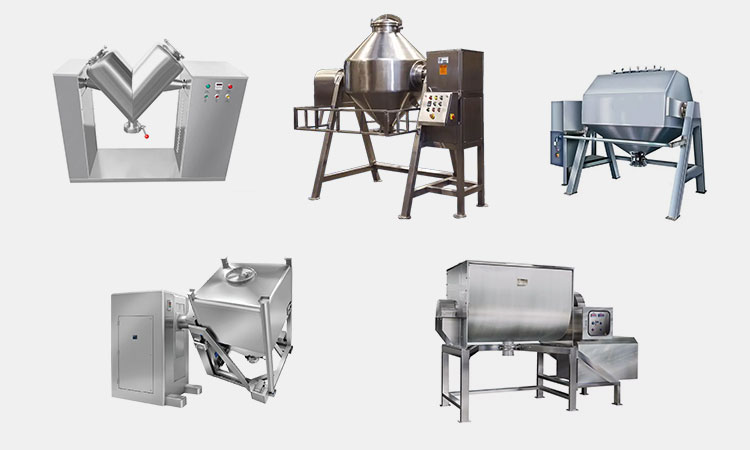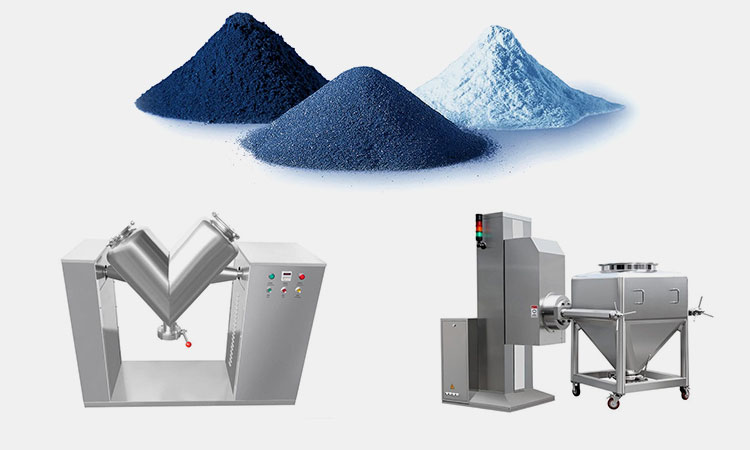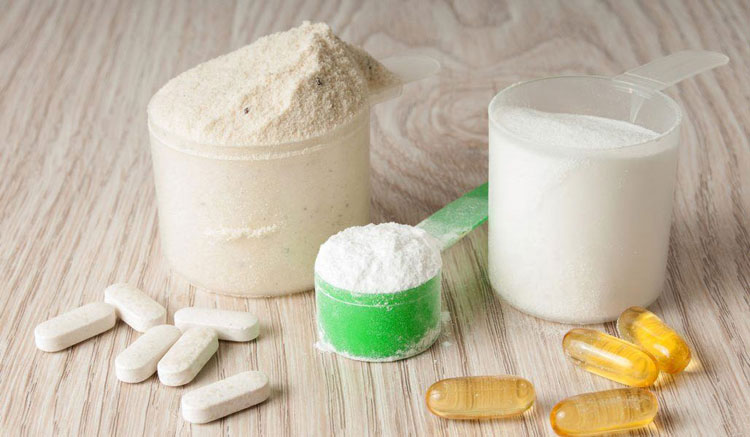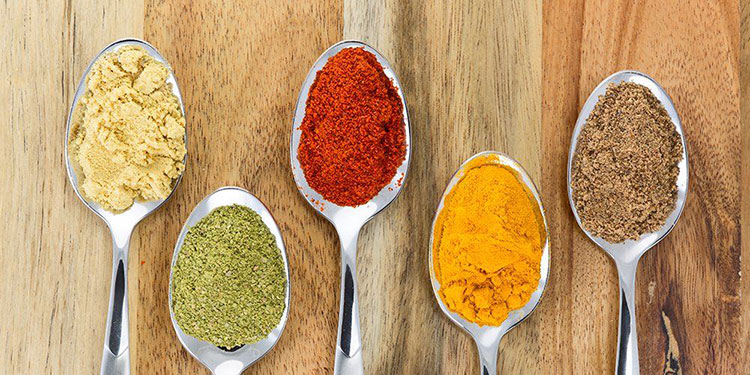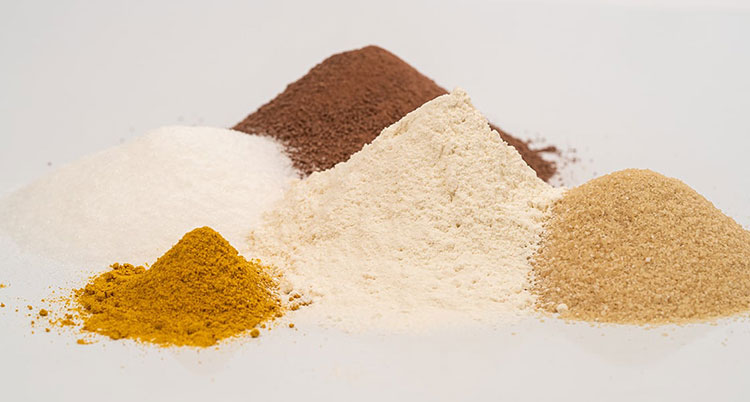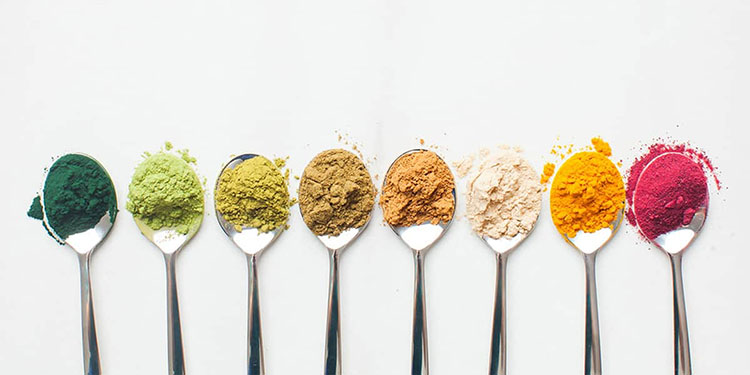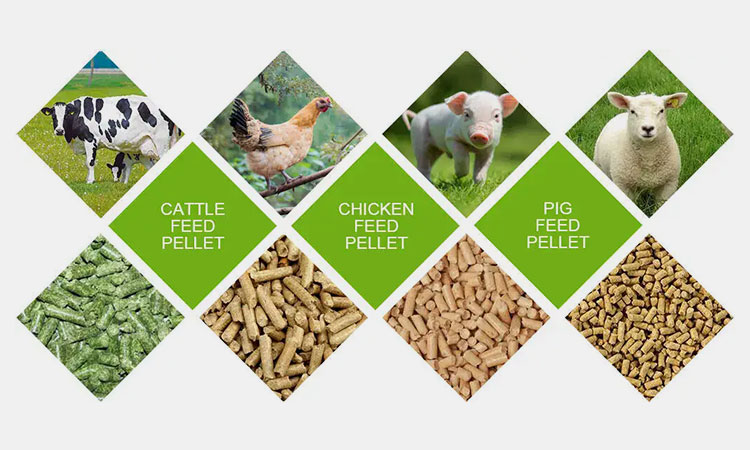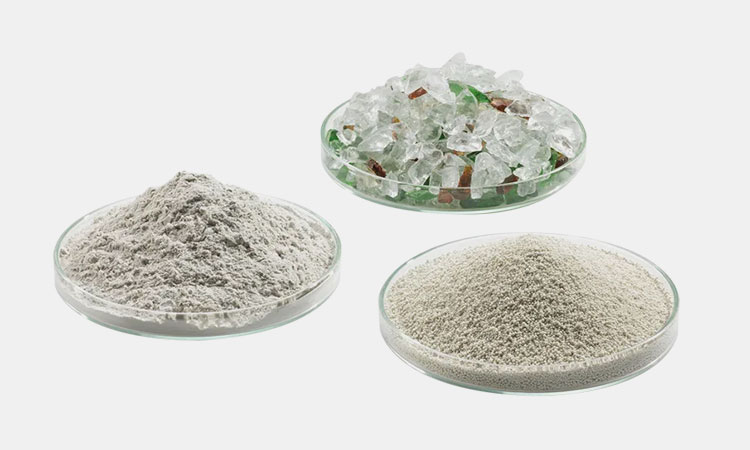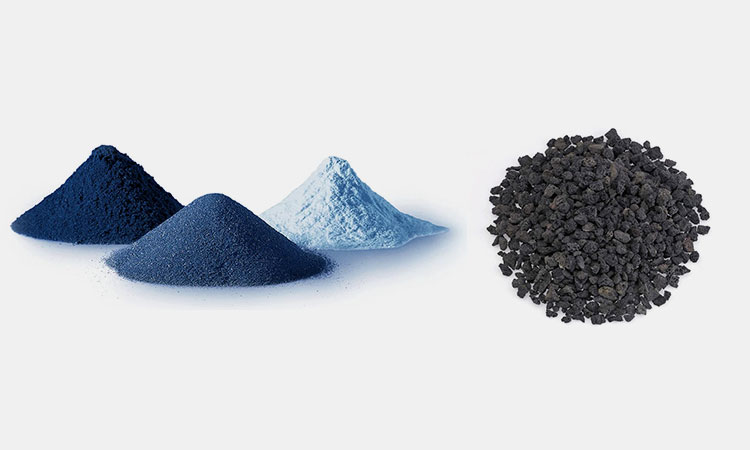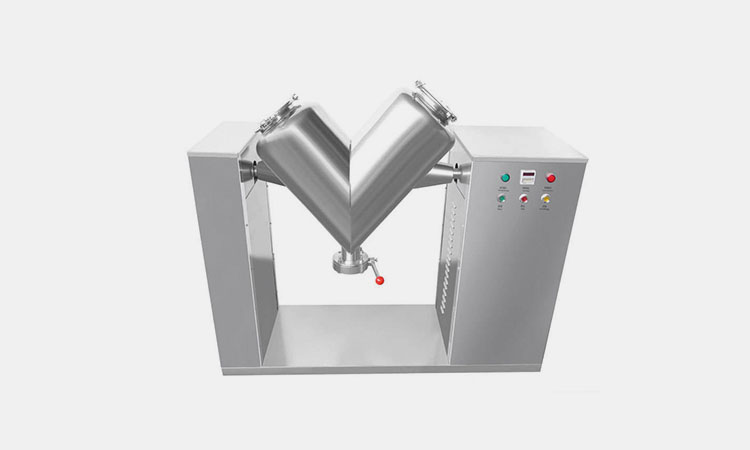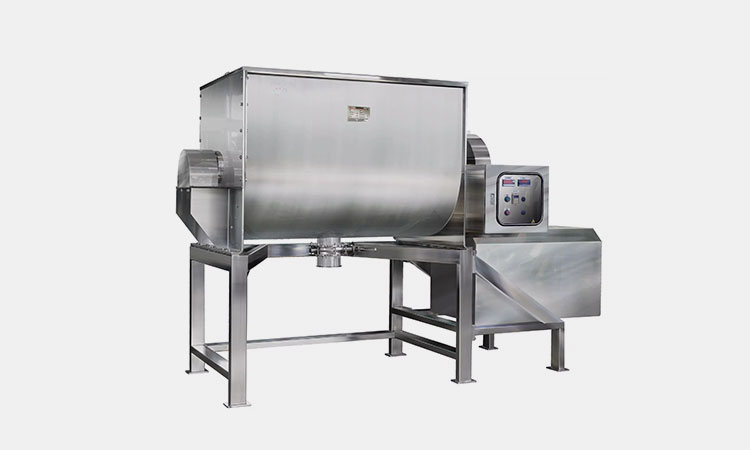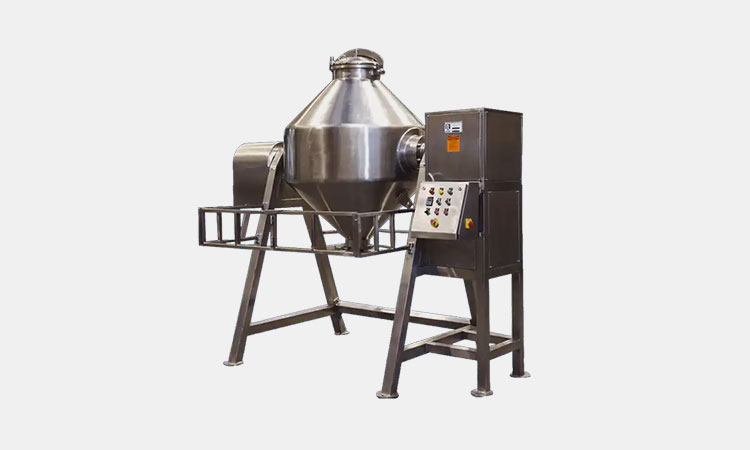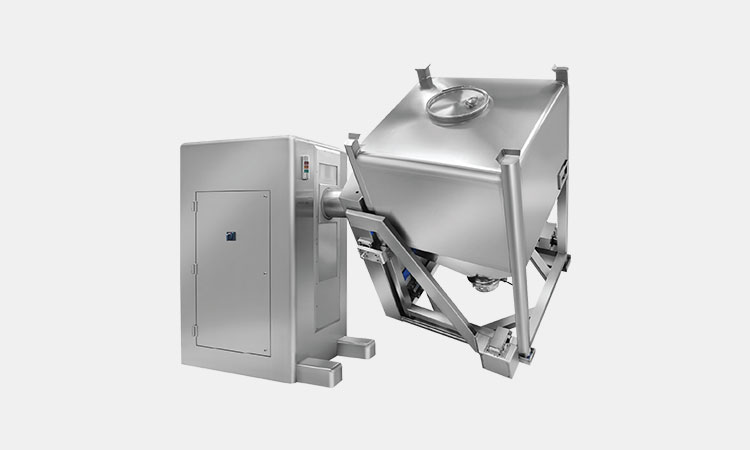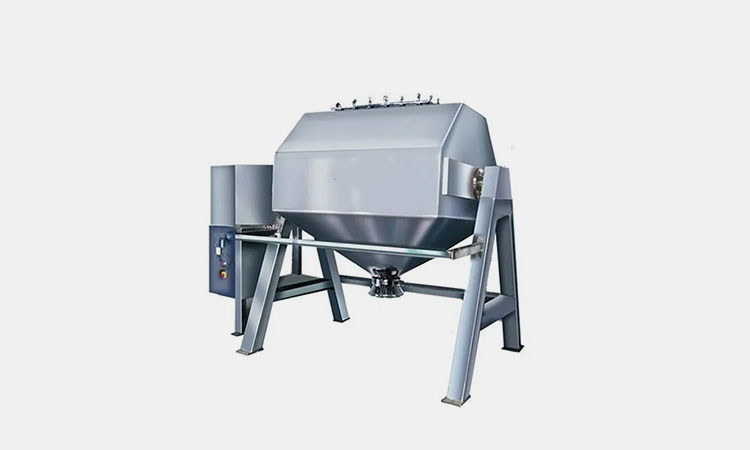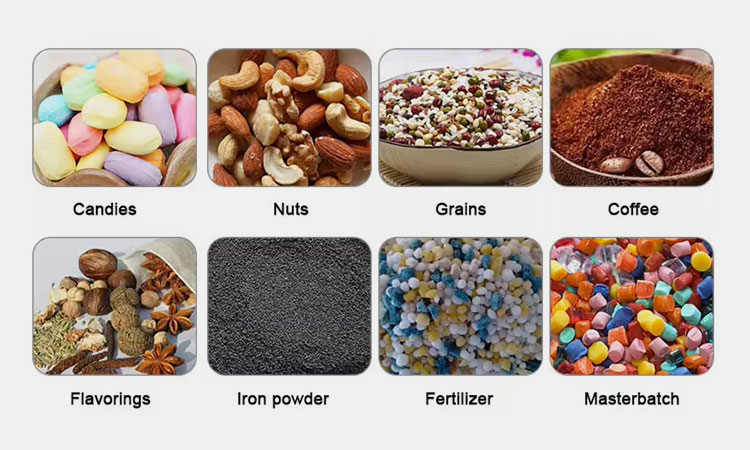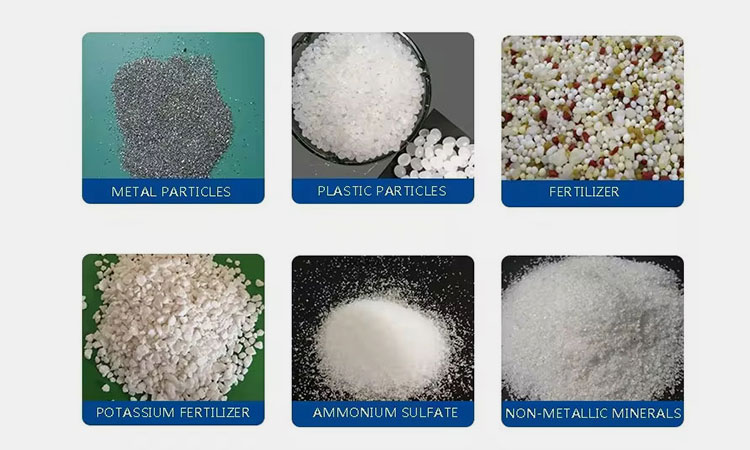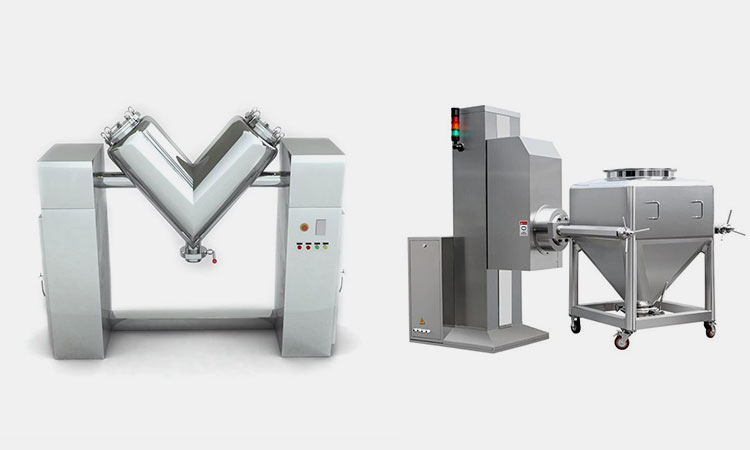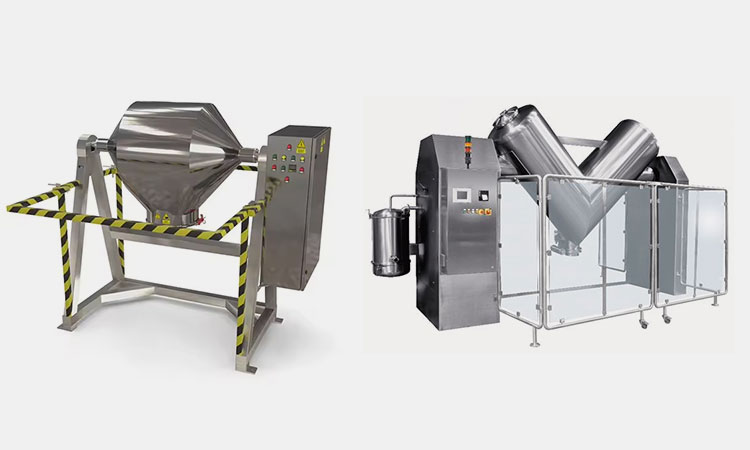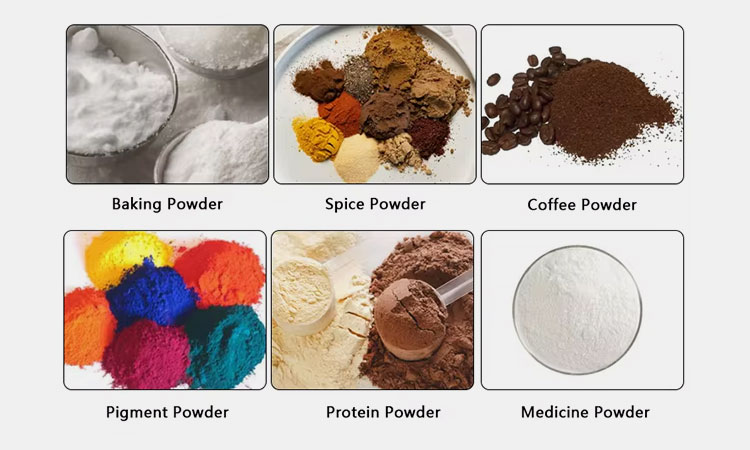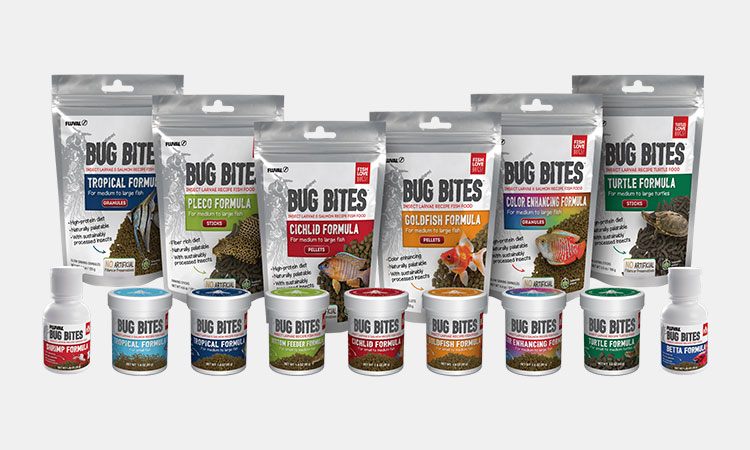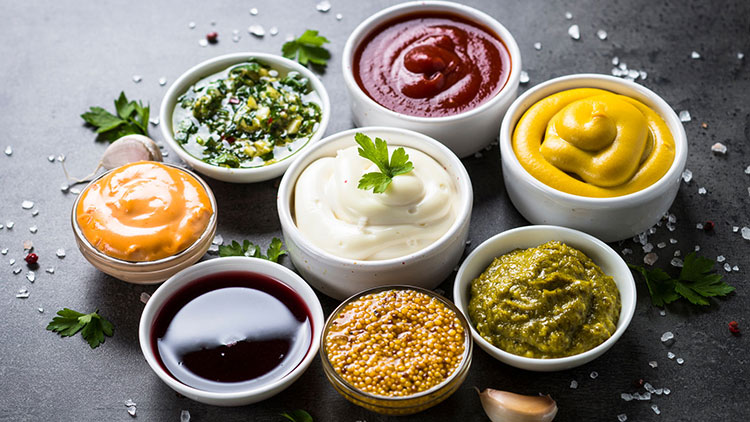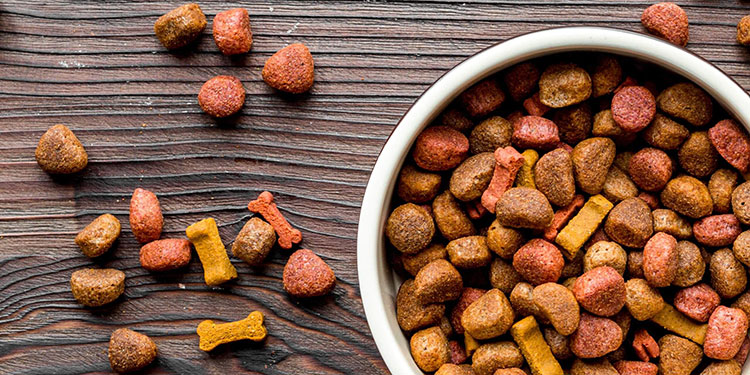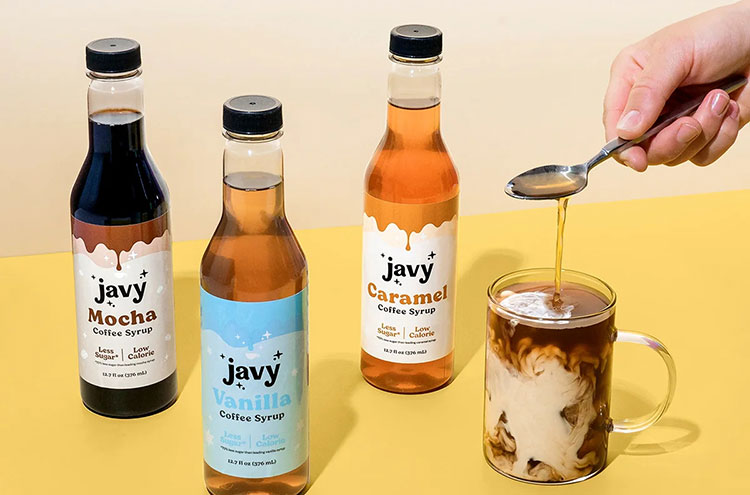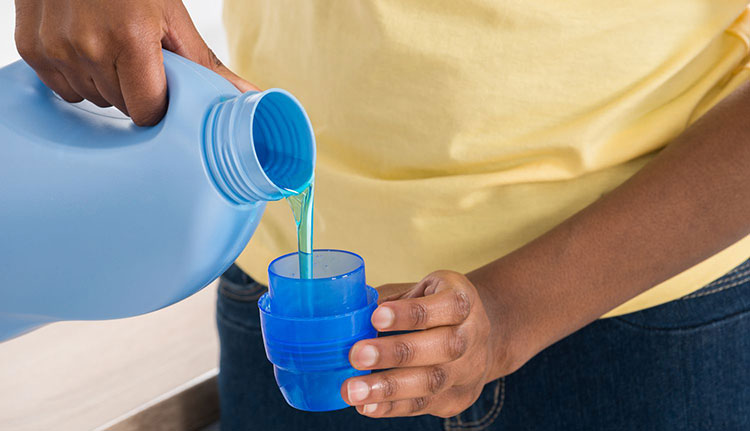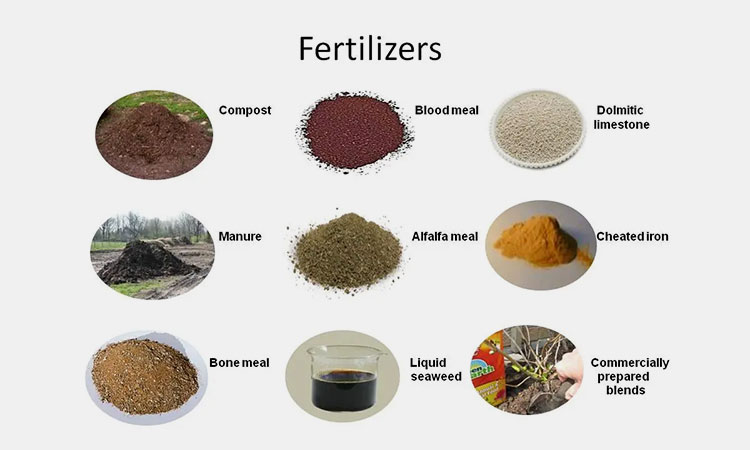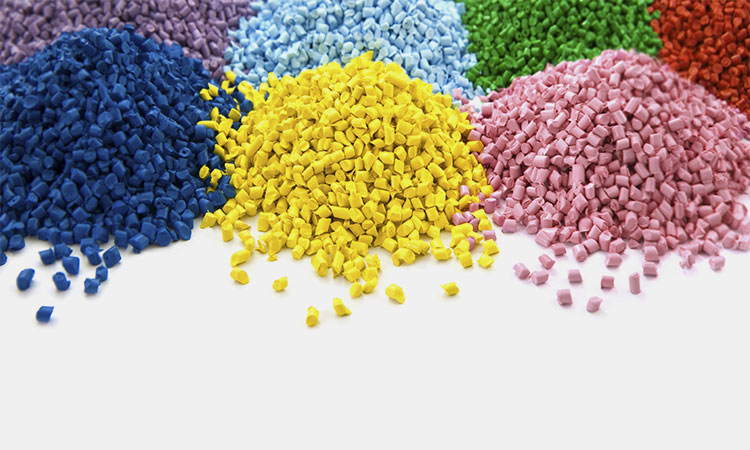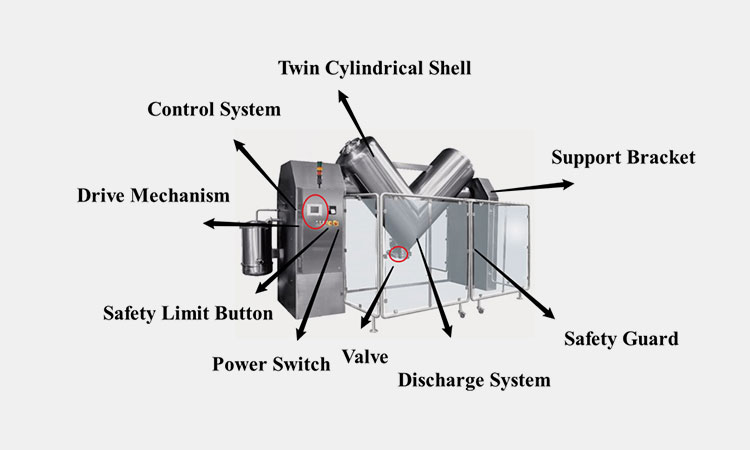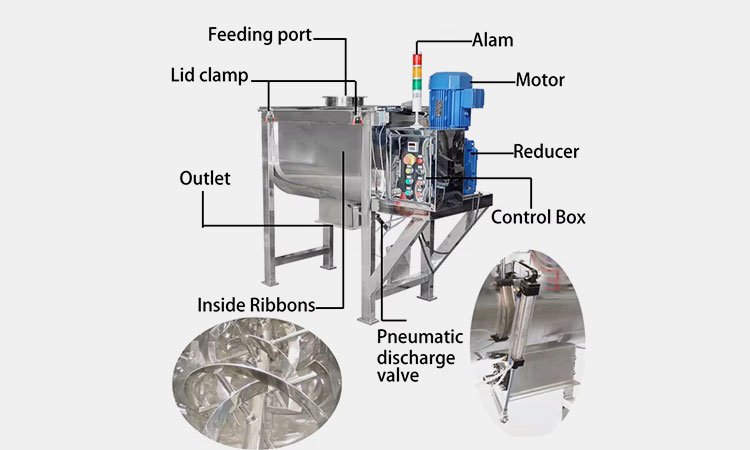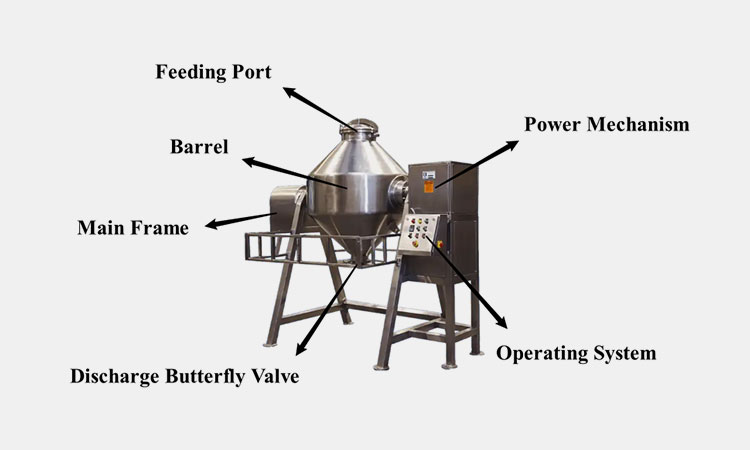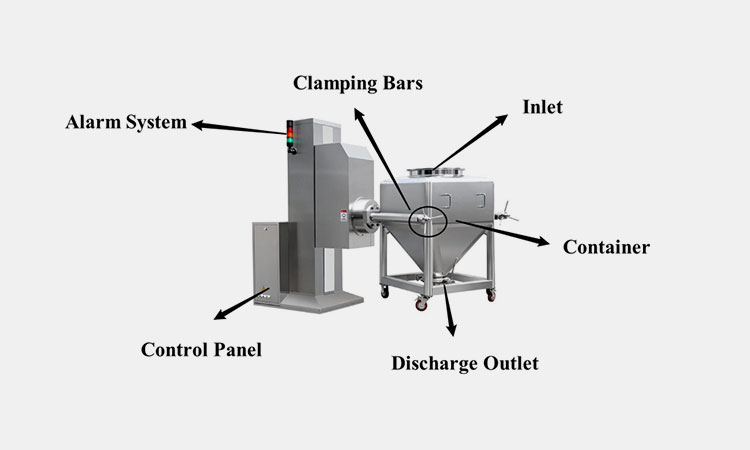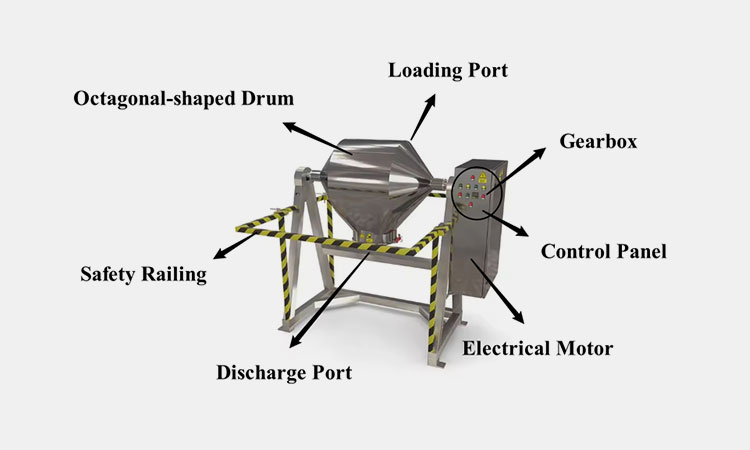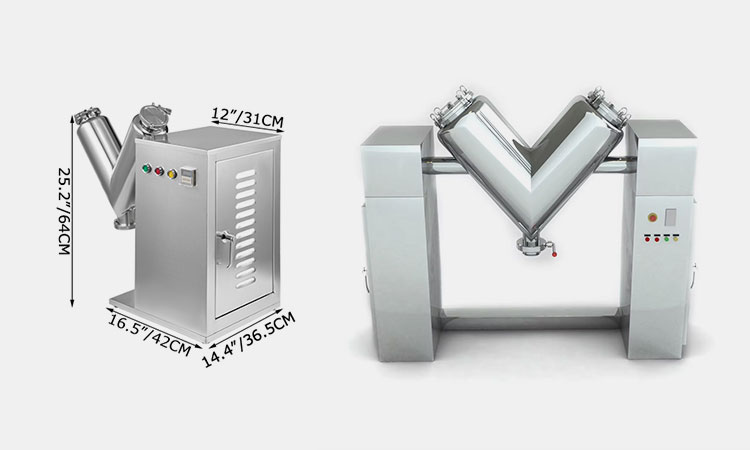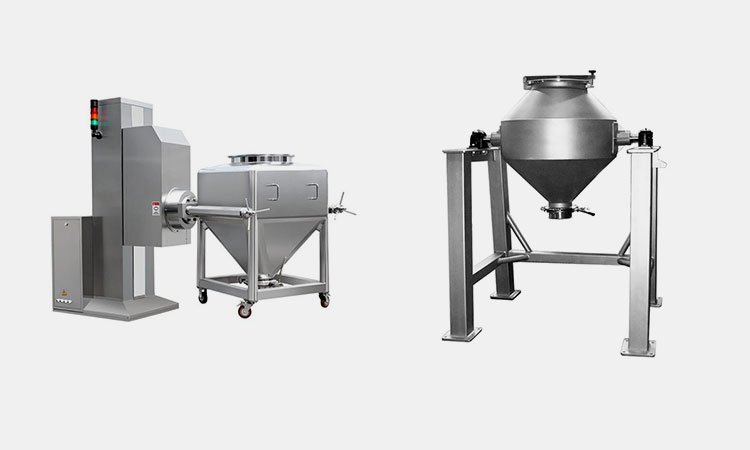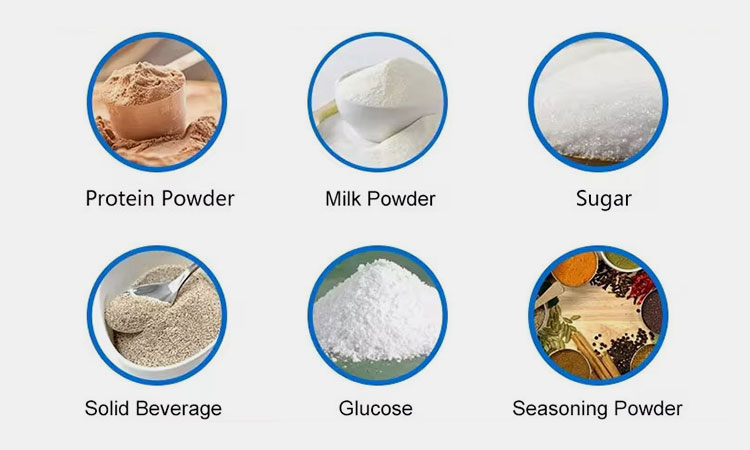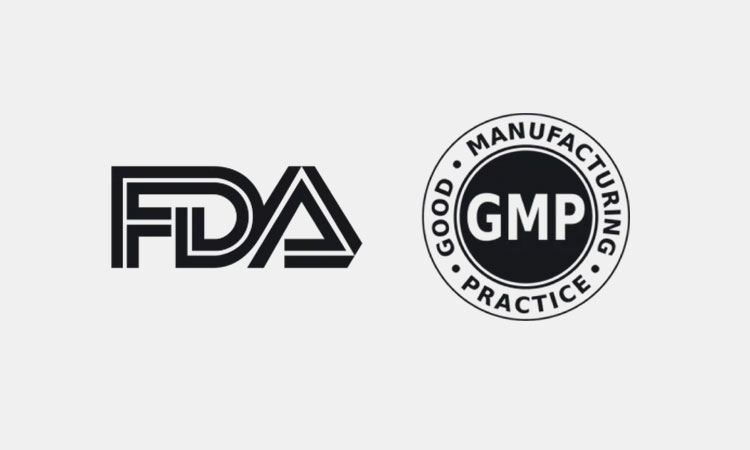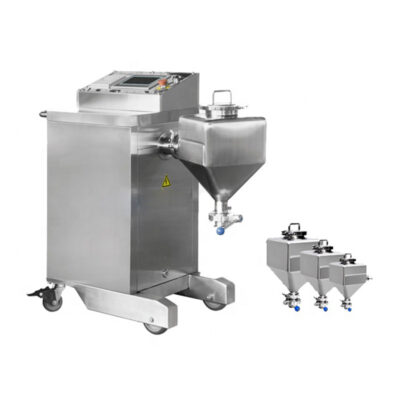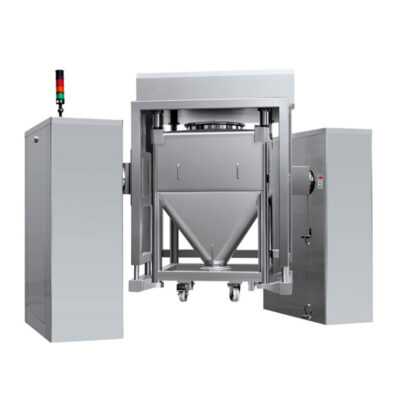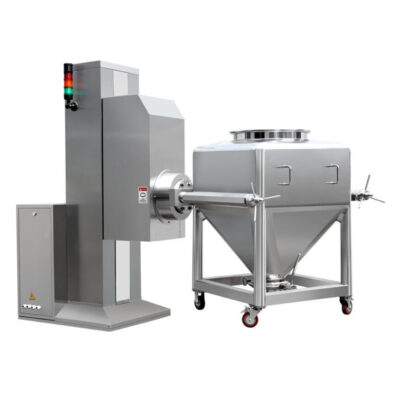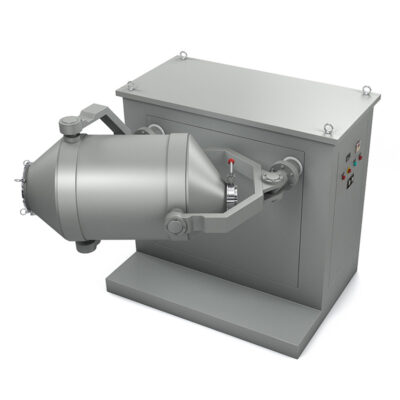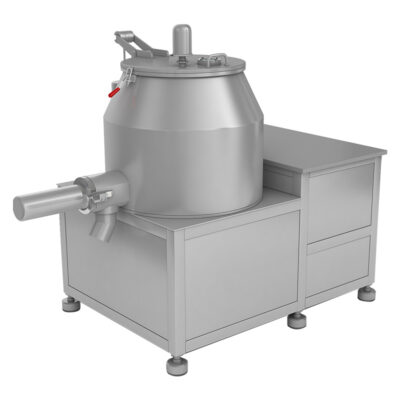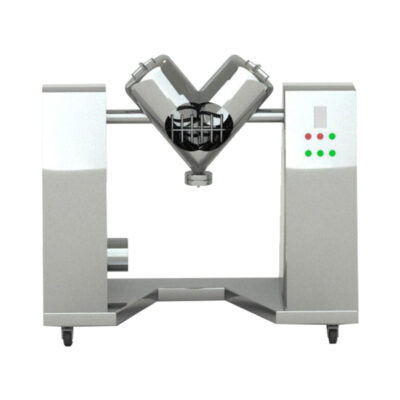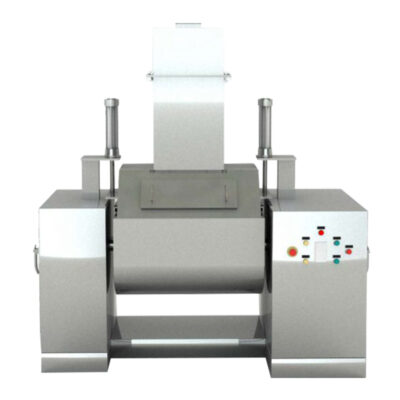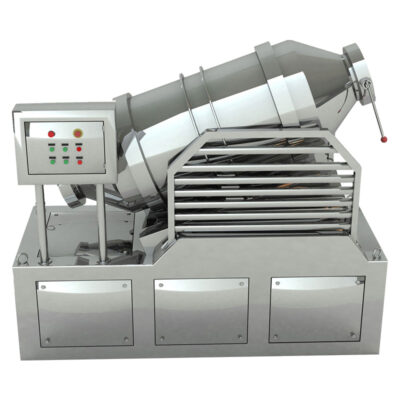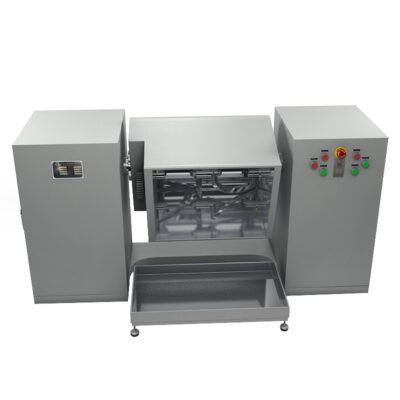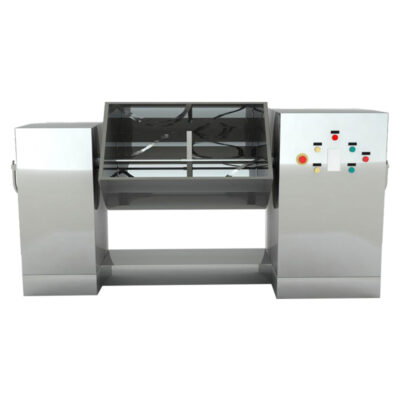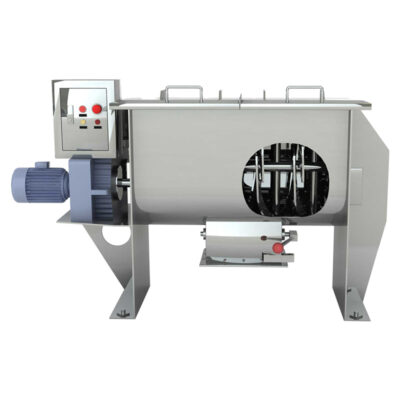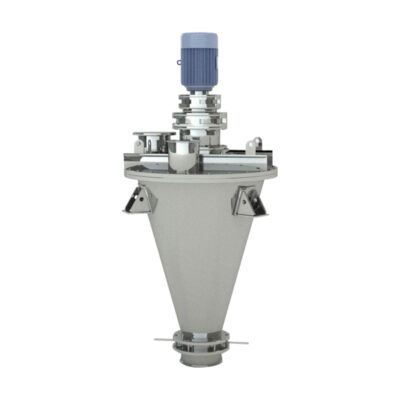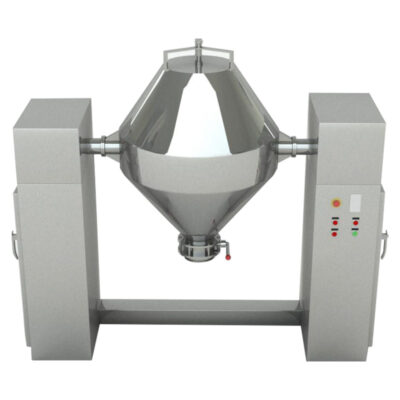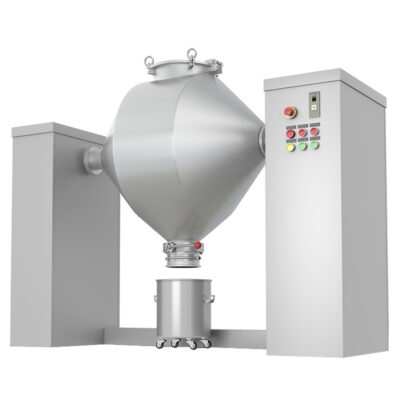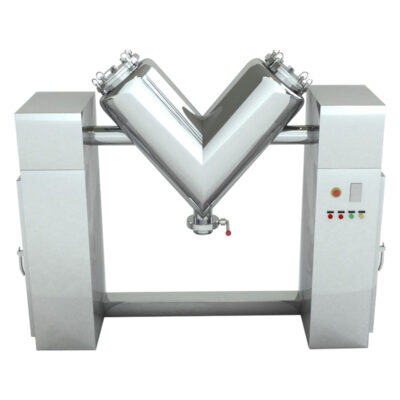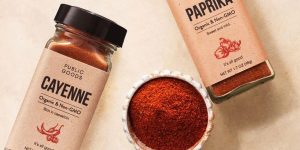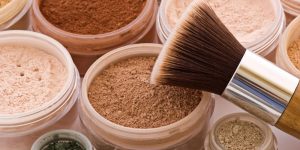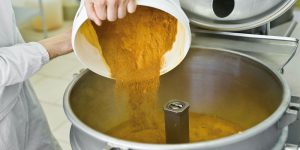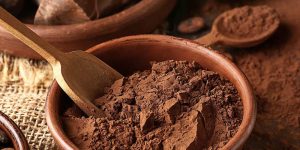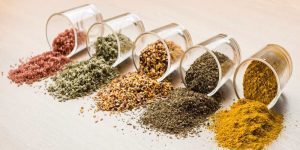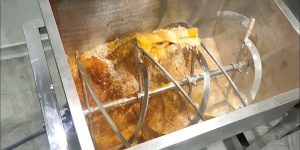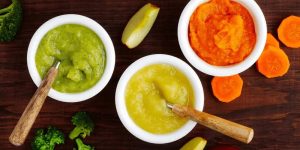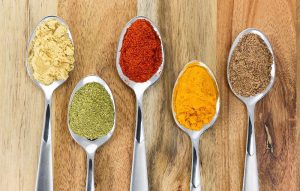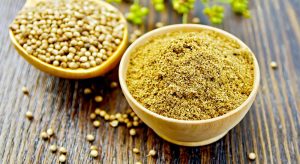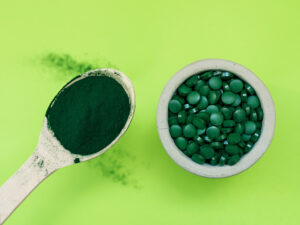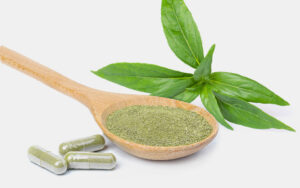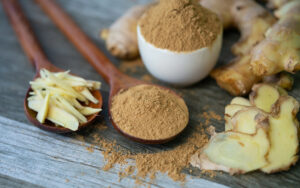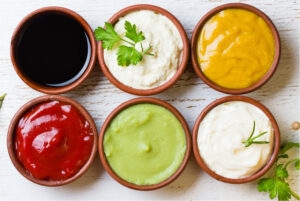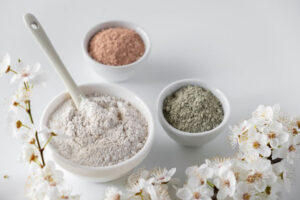Types Of Blenders In Pharmaceutical Industry
Are you looking for the blenders and blending systems in pharmaceutical industry for your materials and products to be processed? Who are the world leaders in designing and manufacturing blender and blending systems for powders and granules in pharmaceutical industry?
Types Of Blenders In Pharmaceutical Industry-sourced: cms
What are the types of blenders in pharmaceutical industry and their purposes and uses? There are a lot innovative effective designs of types of blenders in pharmaceutical industry for your choice and application. Through this types of blenders in pharmaceutical industry guide, you may get the top blenders list. Let us figure out now!
1.What Is Blender In Pharmaceutical Industry?
Allpack Blender In Pharmaceutical Industry
The blender is widely applied in the pharmaceutical, food, chemical and cosmetics industry for mixing and emulsifying various powders, granules and other substances. It can offer you excellent quality homogenous mixture with desired speed, temperature and time. There are types of blenders in pharmaceutical industry for your choice.
2.What Are The Application Of Blenders In Pharmaceutical Industry?
In addition to the pharmaceutical industry, blenders are widely applied in the food and beverage industry, chemical industry, cosmetics industry, animal feeds, construction industry, ceramics Industry, etc.
Pharmaceutical Industry
Pharmaceutical Industry-sourced: askthescientists
The blenders can be used for mixing and blending raw materials such as tablets, capsules and other mixed drug formulations, drug powders, excipients, etc. It helps you mix powders, granules and other materials evenly. The processed powders and granules can facilitate the subsequent filling and pressing of drug powders.
Food Industry
Food Industry-sourced: womenshealthmag
The blenders can also be used for the processing and production of raw materials such as baked powder, candies, and beverages. It can fully and evenly mix ingredients such as flour, sugar, spices and liquids to obtain the best flavor and viscosity of raw materials.
Chemical Industry
Chemical Industry-sourced: syntegon
The blenders can be applied to the chemical industry for processing the mixed fertilizers, pesticides, catalysts, plastic powders, pigments, additives, washing, dyes, powdered catalysts, specialty chemicals and other industrial chemicals.
Cosmetics Industry
Cosmetics Industry-sourced: pforlife
The blender is often used to process the shearing, emulsification and mixing of materials such as creams, lotions and cosmetics. It helps you mix ingredients like oil, emulsifiers, flavors, pigments, cosmetic powders, talc, colorants and other ingredients thoroughly to meet the needs of the cosmetics industry.
Animal Feeds Industry
Animal Feeds Industry-sourced: cn-pellet.
Blenders are widely used in the production of animal feeds and pet food to mix various ingredients like grains, proteins, vitamins and minerals for you use. It can also be used to prepare animal feeds by mixing grains, molasses, vitamins, etc.
Construction Industry
Construction Industry-sourced: poraver
The ribbon blender is often used in the construction industry to mix various materials like bentonite, calcium carbonate, silica, concrete, mortar, gypsum and other dry powders and aggregates of building materials for your application.
Ceramics Industry
Ceramics Industry-sourced: azom
In the ceramics industry, types of blender are used to mix dry powders used in your production of tiles, refractory bricks, pottery and advanced ceramic materials.
3.What Are The Types Of Blenders In Pharmaceutical Industry?
There are various of blenders in pharmaceutical industry.
V Blender
Allpack V Blender
The V blender, also called as twin shell blender, is mainly used for mixing and drying powders and granules in pharmaceutical, health care, chemical, food and other related industries.
It mainly consists of two inclined cylinders connected together in a "V" shape. Through mechanical transmission, it can make the powder in the shell move back and forth, so as to continuously rotate and split to achieve the final uniform mixing.
Ribbon Blender
Ribbon Blender-sourced: mill
The ribbon blender can be widely used for mixing and blending dry powders, viscous pastes, creams to meats. It has a U-shaped trough and multiple spiral agitators, which can use axial and radial motions to mix, fold, shear and stir your various materials at the same time.
This equipment can provide you triple mixing action to ensure fast and efficient mixing of materials.
Tumble Blender
Tumble Blender-sourced: servo-lift
The tumble blender, also called as double cone blender, is often used in the food, chemical and other industries to fully mix dry powders or small granules or free-flowing solids with good fluidity.
It mainly achieves low shear mixing effect by alternately folding and unfolding materials through gentle end-to-end action. You can equip it with a stirrer to enhance the mixing effect of materials.
Bin Blender
Bin Blender-sourced: freund-vector
The bin blender, also called as IBC blender, mainly achieves mixing and stirring of two or more powders and granules in the pharmaceutical, chemical, food and other industries by tumbling.
It is a mechanical, optical and electrical integrated equipment that uses PLC control technology and variable frequency control technology, and can automatically complete all actions such as clamping, lifting, mixing and lowering of the mixing hopper.
Octogonal Blender
Octogonal Blender-sourced: chipandprocessor
The octogonal blender is suitable for mixing and blending crystalline and granular materials. Due to its very slow mixing speed and octagonal container shape, it is widely used for mixing and stirring your granules and powders in pharmaceuticals, food, chemicals and cosmetics.
In the pharmaceutical octagonal blender, due to the octagonal shape of the product container, the particles come from all sides, so the speed requirement is low.
4.What Are The Benefits Of Types Of Blenders In Pharmaceutical Industry?
Benefits Of Types Of Blenders In Pharmaceutical Industry-sourced: enjoybenefits
The blenders in pharmaceutical industry have various features and benefits if you have applied them in your business. There are the benefits.
Consistency
The blenders in pharmaceutical industry can handle a variety of raw materials and ensure you the consistent blending, resulting in uniform product quality and less waste.
Versatility
Versatility-sourced: liaoyangxianglong
The blenders in pharmaceutical industry can handle one or more materials at the same time, such as powders, liquids and semi-solids. Its wide range of applications can meet your needs of different industries, providing you with a wide range of raw material mixing applications.
Efficient Mixing
Efficient Mixing-sourced: precisionwork
The unique design of each type of blenders, different rotation speeds and the ability to handle different materials can provide you with high-intensity and high-efficiency material processing and mixing. By automating the mixing, it can save you time and labor costs and improve your raw material processing efficiency.
Efficient Loading and Unloading
The discharge valve at the bottom of each blender allows for efficient discharge of mixed materials, ensuring you a clean and controlled process. Similarly, the top loading port allows easy and precise addition of materials, simplifying your mixing operations.
Enclosed Design
Enclosed Design-sourced: wantongpharmaceutical
All blenders are enclosed designs. This design prevents spillage during mixing, minimizes exposure to moving parts, and ensures you a closed environment for mixing operations.
Safety Guards
Safety Guards-sourced: jianyinwantong
All blenders are designed with safety guards and shields. These protect operators from moving parts and prevent accidental contact, adding an extra layer of safety during maintenance or operation.
Safety Compliance
All blenders comply with strict safety standards set by regulatory agencies. It meet or exceed safety requirements to provide you with reliable and compliant mixing solutions.
5.What Products Are Mainly Processed By Types Of Blenders In Pharmaceutical Industry?
There are various types of materials from pellets and rocks to viscous materials and powders that can be processed and blended with the blenders in pharmaceutical industry.
Powders
Powders-sourced: Yulanpackaging
Powders from various food, pharmaceutical and chemical industries can be processed with blenders. These raw materials include but are not limited to milk powder, coffee powder, cake powder, flour, capsule powder, tablet powder, pigment, coating, etc.
Dry Solids
Dry Solids-sourced: fluvalaquatics
From coffee beans, mixtures, seasonings, spices, flour, tea powder in the food industry to powdered detergents, ceramics and fertilizers in the chemical industry, as well as various drug powders in the pharmaceutical industry and various packaging raw materials in the cosmetics industry.
Seasonings and Sauces
Seasonings and Sauces-sourced: zeezest
Seasonings and sauces occupy an important place in the food industry. Various salad dressings, ketchup, mustard, beef sauce, butter sauce, peanut butter, sesame paste, can greatly increase their unique flavor by delicately blending and mixing. The blenders can provide you high-quality mixing and processing for seasonings and sauces.
Pet food
Pet food-sourced: crbgroup
In the production of pet food, in addition to the necessary proteins, cellulose, carbohydrates, etc., various vitamins, calcium, amino acids, and healthy fats are also added to their food. Pet food can make the texture of the product more uniform by fully mixing and blending.
Syrup
Syrup-sourced: javycoffee
Syrup is a very important raw material in the food industry, beverage industry, and pharmaceutical industry. It is mainly made of preservatives and raw sweeteners mixed and dissolved in water. This material is widely used in blenders for processing and mixing.
Polymer
Polymer-sourced: analyzing
Polymer is a high molecular weight compound. Different polymers can be mixed together through blenders without using chemical bonding. In this way, you can quickly and cheaply produce products with unique and complex properties.
Metal
Metal-sourced: usgranules
The mixing of metal powders can create a material with the advantages and characteristics of each metal. By using a high-intensity blender, the molecular structure of the metal powder is broken down and new metal materials are created.
Detergents
Detergents-sourced: thoughtco
Most detergents are made from a combination of different products. The blenders ensure the consistency and uniformity of the detergent.
Fertilizers
Fertilizers-sourced: horticultureforhomegardeners
Fertilizers are usually made by mixing together plant growth promoters such as nitrogen, phosphorus and potassium. Using blenders can help you get a fine mixture of ingredients that can be used to promote plant growth.
Plastics
Plastics-sourced: analyzing
With different types of blenders, you can get different plastic mixtures. By choosing different blender models, you can choose different effects in quality and strength of the mixture.
6.What Are The Working Principles Of Types Of Blenders In Pharmaceutical Industry?
Different types of blenders may slightly differ from the working principles. Their working principles are:
Working Principles Of V Blender
Working Principles Of AIPAK V Blender
Before loading the material, you need to make sure that the V blender can load material capacity of about 50% to 70% of the entire blender capacity;
Before any operation, you need to make sure that the blender is accurately connected and the system can operate efficiently;
Loading the material to be processed into the two shells;
After loading, the tumbling process of the twin shell of the V blender begins;
In the cylinder, the material will be regularly split into the two arms and intermittently combined;
When the material falls freely into the cylinder under the action of gravity, mixing will occur;
Through continuous breaking and mixing, the material will be continuously dispersed and mixed;
Working Principles Of Ribbon Blender
Working Principles Of Ribbon Blender-sourced: vortex
The material is loaded into the ribbon blender;
The cylindrical trough provides the mixing chamber where the mixing process takes place;
When the blender is turned on, the ribbon agitator rotates in the trough;
The inner and outer spiral ribbons embedded in the semi-cylindrical trough move inward and outward, shearing the material;
The outer spiral ribbon pulls the material from the sides of the mixer to the middle;
The inner spiral ribbon pushes the material back to the sides;
The material to be processed folds back and forth to form a convection mixing pattern;
Working Principles Of Tumble Blender
Working Principles Of Tumble Blender-sourced: lodha
Loading the raw materials into the container in layers, not side by side;
The rotating container is suspended at both ends of the drive and driven shafts, connected by two joints that cross and are perpendicular to each other in space;
The powder mixing drum is placed in the rotating container;
When the drive shaft rotates, the drum performs a compound motion, including horizontal movement, rotation and flipping;
When the tumble blender rotates on the horizontal axis, the material in the container begins to roll and pour;
Working Principles Of Bin Blender
Working Principles Of AIPAK Bin Blender
loading the materials through the vacuum loader;
Setting the mixing time and mixing speed according to the process requirements;
Starting the control system and the mixing operation;
Bin blender only requires a short mixing time and relatively low power consumption;
During the mixing process, the powder moves randomly from the center of the tank to the end of the tank, while moving from top to bottom;
When the set time is reached, the device will stop automatically;
When the device stops, you can use the automatic loader to unload the materials;
Working Principles Of Octogonal Blender
Working Principles Of Octogonal Blender-sourced: adinath
Loading materials to be mixed into the octagonal blender through the loading port;
Starting the device;
When the blender rotates, the materials inside will pour to the bottom, and then rotate 90 degrees, and the materials will pour to the other side again;
The agitator inside the blender rotates horizontally, so that the materials move in a multi-directional pattern;
The agitator may be attached to the paddle or ribbon to enhance the mixing process;
After the mixing process is completed, the materials will be discharged through
7.What Are The Different Components Of Types Of Blenders In Pharmaceutical Industry?
There are slight differences between different types if blenders in pharmaceutical industry for there main components.
Main Components Of V Blender
Main Components Of V Blender-sourced: trustar-pharma
Twin Cylindrical Shell
The twin cylindrical shell consists of two hollow cylindrical arms that are inclined. These shells form the container system where all raw material mixing and processing takes place. Each cylindrical arm has access points for loading materials, cleaning and monitoring.
Discharge System
The discharge system is usually located at the bottom of the V blender. It is usually about 24 inches or higher from the ground to facilitate your unloading.
Valve
The valve needs to be manually or pneumatically adjusted. It can provide you a safe and sealed environment for raw materials, avoiding material waste caused by spillage during material handling, and maintain a clean working environment.
Control System
The V blender comes with a pre-installed full control system. It mainly includes the user interface screen, control panel and PLC. Among them, the PLC system is essential for programming multiple machine operations and other demanding processes.
Power Switch
The power switch allows you to start or stop the machine.
SafetyLimit Buttons
The safety limit button provides you with a preventive measure. It ensures that the safety guard fully covers the rotating part before the material operation begins.
Drive Mechanism
The drive mechanism ensures that the V blender has enough thrust for operation. It mainly includes a DC motor that can provide sufficient torque and constant rotation force for the cylindrical shell. It also includes general motors, high-efficiency motors, energy-saving motors, variable frequency motors, or explosion-proof motors.
Safety Guard
The purpose of installing the safety guard is to cover the rotating part of the V blender to protect you from any physical injury during operation.
Support Bracket
The sturdy stainless steel bracket provides support during the operation of the machine. It can also bear the huge weight of the blender base and provide support for the entire structure of the equipment.
Main Components Of Ribbon Blender
Main Components Of Ribbon Blender -sourced: relapharma
Feeding Port
All the materials need to be mixed and blended that will be loaded into the ribbon blender through this feeding port. After all materials have been loaded, the feeding port need to be closed.
Alarm
The alarm can promptly remind you of equipment failures and other problems. It can help you adjust and urgently stop the ribbon blender in motion in time to avoid bigger errors and situations.
Motor
The motor can provide power for the agitator shaft. You can choose the motor power and speed rating according to the capacity and process requirements of the blender.
Inside Ribbons
The inside ribbons are inside the U-shape tank is specially designed with bidirectional ribbon blades. The inside ribbon constitutes the core of the ribbon blender and can provide you efficient mixing effects to the blender.
Outlet
After all the materials have been processed and mixed well, it will be discharged through the outlet with the pneumatic discharge valve.
Pneumatic Discharge Valve
The pneumatic discharge valve seals the bottom outlet of the ribbon blender to help you control the flow of the circulation system. It can adjust the flow according to the situations without your manual adjustment.
Control Box
The control box also called as the control panel. The control panel is mainly composed of switches, timers, starters and PLC, etc. It is mainly used to control the operation, speed time setting and stop of the mixer for your easy use.
Reducer
The reducer also called as the gearbox, and it can provide the driving force for the blender to rotate at the required speed. High-speed ribbon blenders need to be equipped with a large capacity control box to handle high torque loads.
Main Components Of Tumble Blender
Main Components Of Tumble Blender-sourced: cms
Feeding Port
Tumble blender has only one feeding port and it is on the top of the barrel. This design makes it easy for you to load the ingredients. It is equipped with a lid and the lid must be kept closed during the operation of the blender.
Barrel
The barrel is a huge cone-shaped container that contains the double cone. Its main function is to mix and blend the raw materials to be processed. The surface of the barrel is smooth and solid, mainly made of stainless steel.
Main Frame
The main frame of tumble blender is smooth and solid. It can support all parts and the entire system during the operation of the equipment.
Operating System
The operating system is the digital control unit of the entire system. It can control the settings of all programs for feeding, mixing, injection and discharging. In addition to loading ingredients, you can also easily control all variables from the operating system.
Power Mechanism
The power mechanism mainly provides power for the system operation of the double cone blender. It can control the opening and closing of the valve that discharges the mixture in the blender.
Discharge Butterfly Valve
The discharge butterfly valve is located at the end of the discharge port at the bottom of the barrel. It can control the material in the barrel to flow out smoothly and safely.
Main Components Of Bin Blender
Main Components Of Bin Blender-sourced: cms
Inlet
The inlet of the bin blender is located at the top of the container, which is convenient for you to load and adjust the dosage. The port is equipped with a sealing cover to prevent the granules and fine powders in the container from leaking out of the container when the equipment is running.
Container
This is the main container for mixing and blending materials. The blending container has different designs and specifications. Each of its designs and specifications should allow the maximum output of the mixed material.
Discharge Outlet
In contrast to the inlet, the discharge outlet of the bin blender is located at the bottom of the container, which is convenient for the material to be discharged by its own gravity. The port is equipped with a valve with a sealing mechanism. The tightness of the outlet can be controlled by adjusting the valve.
Control Panel
The control panel of the bin blender is designed with a control system of the latest technology. It can intelligently control the automatic operation without human intervention. The mixing time and rotation speed can be adjusted through the touch screen to ensure the best mixing effect.
Clamping Bars
The clamping bars can keep the container stable and safe during operation. With infrared safety devices and safety interlock mechanisms, clamping bars can protect the stability and safety of the container in case of any problems.
Alarm System
The alarm system can promptly remind you of equipment failures and other problems. It can help you adjust and urgently stop the bin blender in motion in time to avoid bigger errors and situations.
Main Components Of Octogonal Blender
Main Components Of Octogonal Blender-sourced: relapharma
Electrical Motor
The electrical motor drives the gearbox, which in turn drives the rotating drum.
Gearbox
The gearbox drives the rotating drum, which keeps the material mixed evenly.
Octagonal-shaped Drum
The octagonal-shaped drum moves in a complex pattern as it rotates to keep the material mixed evenly. The drum is fitted with a series of baffles or internal fins that help to increase the tumbling of the material as the drum rotates.
Loading Port
The material is fed into the mixer through the loading port. The loading port is completely sealed during operation. The dual feed port setting can meet your large volume material loading needs.
Discharge Port
After a specific period of tumbling and rotation, the material is evenly mixed and discharged through the discharge port located at the bottom of the mixer. The material height should be maintained according to your actual requirements or feed box size.
Control Panel
The control panel is equipped with SS cover panel with buttons, on/off switch, hinge operation, MCB and overload relay settings, etc.
Safety Railing
To protect your safety during operation, the octogonal blender is installed with safety blender to ensure your safety.
8.What Are The Factors To Consider Before Purchasing Types Of Blenders In Pharmaceutical Industry?
Before purchasing the blenders, there are various factors you need to consider. They are:
Blender Capacity
Blender Capacity-sourced: toolots
The capacity of different types of blenders should vary depending on the size of the application. The same type of blender also has different sizes. Generally, the larger the capacity of the blender, the more materials it can carry and the more expensive it will be.
Blender Model
Blender Model-sourced: toolots
Different manufacturers produce different blenders. The difference lies in the quality and technology level. You shall choose the machine model and manufacturer with very high quality and the highest technology level.
Material Types
Material Types-sourced: jubao
Different blenders are suitable for mixing and processing different materials. V blender can handle the mixing of various powders and granular materials. Ribbon blender is suitable for the processing of various viscous materials. Tumble blender is suitable for various dry powders or small particles with good fluidity, etc.
cGMP Compliance
cGMP Compliance-sourced: shipwizard
You would better choose the blenders that meet the manufacturing quality standards. You need to check in advance whether the equipment meets the good manufacturing practices.
Quiet Operation
Quiet machines create a quiet working environment. While looking for good blenders, you can test the machine and consider the noise level. Good equipment can provide you with a quiet working environment.
Reduce Dust
Reduce Dust-sourced: bona
Many blenders are equipped with a vacuum system to minimize dust emission. In addition to this, automatic machines are also equipped with control systems to reduce dust emission.
Conclusion:
After learning about all the types of blenders in pharmaceutical industry, choosing an efficient and flexible blender for mixing and evenly lubricating for your powders and granules is important. However, there are multiple types of blenders for your choice. If there are more you want to know or you do not know how to choose, please contact us now!
Don't forget to share this post!
Bin Blender Related Products
Bin Blender Related Posts
Bin Blender Related Videos
CONTACT US
Tell us your raw material and project budget to get quotations within 24 hours.
WhatsApp Us: +86 181 6426 8586
Want the best price & newest pharmaceutical machinery buying guide,tips and trends sent straightly to your box?Sign up for AIPAK’s monthly newsletter,we’re free for your consultation and Offer you the most suitable solutions!
The Buyer's Guide
- Capsule Filling Buyer's Guide
- Blister Packaging Buyer's Guide
- Tablet Counting Buyer's Guide
- Tube Filling Buyer's Guide
- Cartoning Buyer's Guide
- Gummy Making Buyer's Guide
- CO2 Extraction Buyer's Guide
- Empty Capsules Buyer's Guide
- Suppository Filling Buyer's Guide
- Tablet Coating Buyer's Guide
- Tablet Press Buyer's Guide
- Softgel Encapsulation Buyer's Guide
Most Popular
- 7 Importance Of Pharmaceutical Packaging In Different Applications You Must Know
- 6 Advantages You Must Know About Tablet Counting Machine
- 8 Advantages of Blister Packaging You Must Know
- 6 Critical Applications of Automatic Capsule Filling Machine
- 6 Stations You must Know to Improve the Filling Quality of Automatic Capsule Filling Machine
